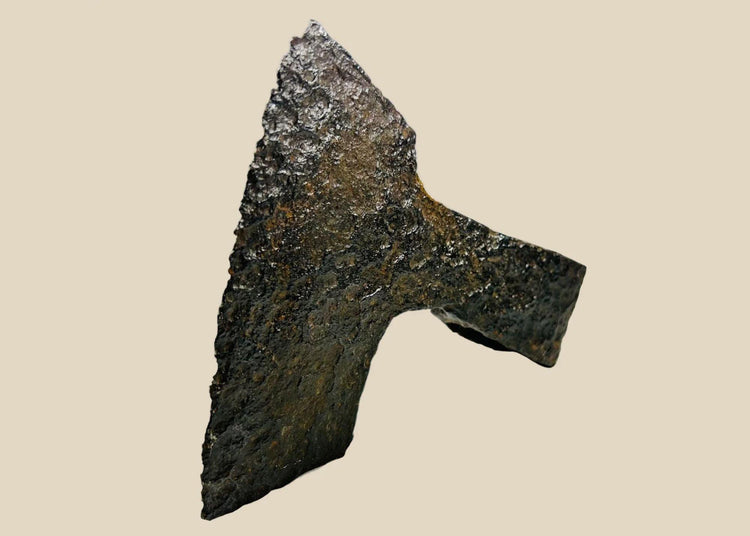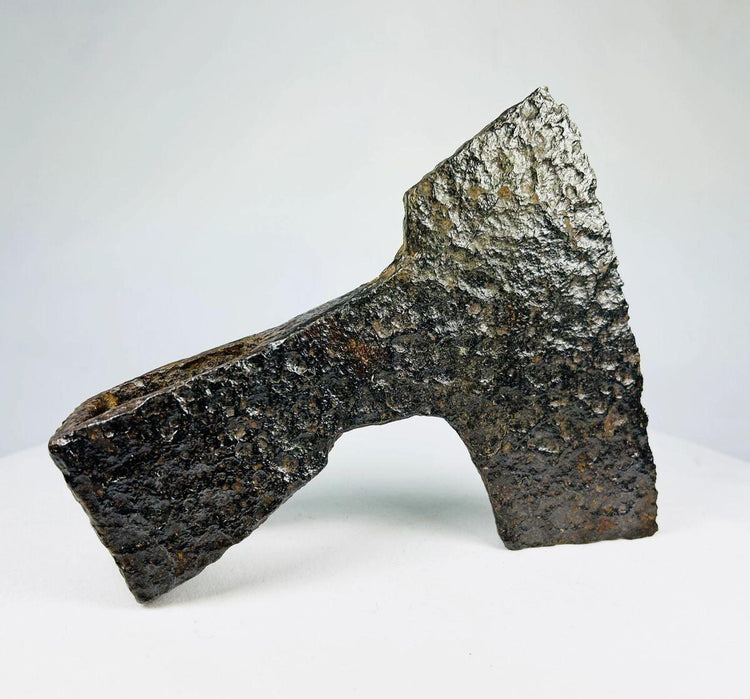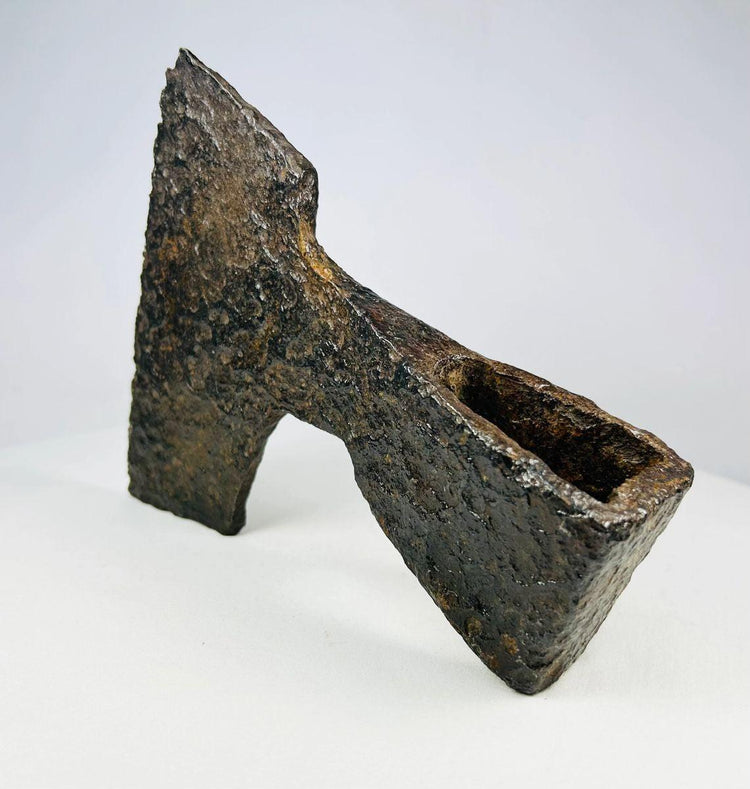Medieval | Iron Axe Head | Bearded Style |Europe | Circa 10-12th Century
Description
More
Less
Historical Context & Origin
Region: Europe (Northern and Eastern regions, Viking and early medieval territories)
Material: Forged iron
Period: 10th–14th Century CE
Description
This striking medieval iron axe head is a remarkable example of European craftsmanship between the 10th and 14th centuries. Hand-forged by skilled blacksmiths, it features a broad, flaring blade with a distinctive bearded edge, a hallmark of Viking and early medieval design. The large, hollowed socket ensured a secure hafting to a wooden shaft, making the axe both a practical tool and a formidable weapon of war. Its survival through centuries is a testament to the durability and skill of medieval metalwork.
Features
- Broad blade with bearded edge, enhancing both cutting and striking efficiency
- Large hollow socket designed to secure a wooden shaft firmly in place
- Coarse, pitted surface texture from centuries of natural oxidation
- Balanced form, suitable for both woodworking and close combat
Cultural Significance
Axes were indispensable across medieval Europe, valued as both utilitarian tools and deadly weapons. In Viking and Slavic regions especially, the axe was symbolic of strength, resilience, and versatility. This piece represents not only the daily labor of medieval life but also the realities of warfare, where axes played a central role in close combat. Its craftsmanship embodies the ingenuity of early European blacksmiths, merging functionality with symbolic importance.
Condition
The axe head remains structurally sound, with wear along the cutting edge consistent with historical use. Its surface exhibits a stable patina of oxidation, confirming centuries of age and exposure. Professionally stabilized, it is preserved against further degradation.
Dimensions (approximate)
Width: 7 in
Age
Circa 10th–14th Century CE
Learn More
Explore Our Collection of Medieval Armour and Artifacts
Read About The Evolution of Armor and Weapons in Medieval Europe
Description
Historical Context & Origin
Region: Europe (Northern and Eastern regions, Viking and early medieval territories)
Material: Forged iron
Period: 10th–14th Century CE
Description
This striking medieval iron axe head is a remarkable example of European craftsmanship between the 10th and 14th centuries. Hand-forged by skilled blacksmiths, it features a broad, flaring blade with a distinctive bearded edge, a hallmark of Viking and early medieval design. The large, hollowed socket ensured a secure hafting to a wooden shaft, making the axe both a practical tool and a formidable weapon of war. Its survival through centuries is a testament to the durability and skill of medieval metalwork.
Features
- Broad blade with bearded edge, enhancing both cutting and striking efficiency
- Large hollow socket designed to secure a wooden shaft firmly in place
- Coarse, pitted surface texture from centuries of natural oxidation
- Balanced form, suitable for both woodworking and close combat
Cultural Significance
Axes were indispensable across medieval Europe, valued as both utilitarian tools and deadly weapons. In Viking and Slavic regions especially, the axe was symbolic of strength, resilience, and versatility. This piece represents not only the daily labor of medieval life but also the realities of warfare, where axes played a central role in close combat. Its craftsmanship embodies the ingenuity of early European blacksmiths, merging functionality with symbolic importance.
Condition
The axe head remains structurally sound, with wear along the cutting edge consistent with historical use. Its surface exhibits a stable patina of oxidation, confirming centuries of age and exposure. Professionally stabilized, it is preserved against further degradation.
Dimensions (approximate)
Width: 7 in
Age
Circa 10th–14th Century CE
Learn More
Explore Our Collection of Medieval Armour and Artifacts
Read About The Evolution of Armor and Weapons in Medieval Europe
You May Also Like

























